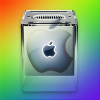Search the Community
Showing results for tags 'Photoshop'.
-
What do you reckon should be the flatten image policy? . I am looking at exporting for fine art printing. It would be great publishing a comprehensive tutorial on layers and files . Seems to me that this the main difference from Photoshop and the main obstacle for photographers like me who wants to make the transition and use PSCC, LR and AP In the same workflow . The videos are great but they need to detail a complete workflow and its various options. Thank you!
-
I've been trying to export as layered Photoshop file to bring into FCP X. However, seems to come out as flattened only. I saw a previously topic and I'm thinking that is the case. Can someone confirm? If so, I guess the only way to do it is to make a "slice" of each layer then export all. Am I correct in that assumption? Thanks
-
This article by fantastic writer Tom Koszyk https://medium.com/product-design-ux-ui/the-perfect-ux-ui-design-tool-13-things-designers-needs-most-f35589ce18e1 highlights some very good points about Affinity Designer and the competition. I think it was well written and should be taken seriously. My question is: Will the issues raised here be addressed? I want to see Designer win all of these competitions. Thanks.
-
Hi, I am testing performance of affinity designer (MAC) vs photoshop CS6 (MAC). I've got a PSD file with multiple folders, layers etc. The file is 750x2000 pixels, so it's quite big. I'm exporting in photoshop png-24 without transparency - exported file has 78kb. After exporting in affinity designer in both png options (24,8) I've got these sizes: 192kb and 119kb respectfully. So at the moment the most important question is how to export png file so at least the size is similar to Photoshop.
-

affinity photo Epic Dark Phoenix - Affinity Photo Composition
Framelynx posted a topic in Share your work
This was originally an Affinity Photo test. Particularly the hair masking tool. I was surprisingly pleased with the results. If I had to do this seriously I probably wouldn't use this dancer model. But dancing models tend to make interesting poses which makes for great supernatural compositions. She had reddish hair which I enhanced and it reminded me of Dark Phoenix... so I went with it and made my alternative version of Dark Phoenix from X-Men. This was just for fun (for once). I find Affinity Photo much like Photoshop, only more "fun" to use because of live preview features and slick refined work flow and a tight smooth program operations. Only $50 no subscription was a bonus too. This image was originally 6000px Wide and which made the program struggled a bit more and made the fan in my Macbook Pro 2011 sound like a cyclone! My artwork is also on Behance: https://www.behance.net/gallery/28344101/Dark-Phoenix- 12 replies
-
- digital composition
- hair masking
-
(and 6 more)
Tagged with:
-
Hi Affinity forum, I decided to buy the app for the price that is relative light engagement. Well, I use Photoshop since 2.51 version I enjoyed alot this new deal in graphics at this time. It was fresh and exciting to participate to this Adobe's journey. The big problem with Adobe which has a real expertise in bitmap is the expensive price they ask, socially unfair for real enthusiasts artists who couldn't afford the software solution. 20 or 10 years ago, there was an unreasonable needs into graphics business so prices jumped due to a mad inflation. Adobe has decided to deal with PC that has attacked the Apple market. Adobe has became an industrial software sometimes agressive, they attacked Quark Xpress market with In-design solution. But now how I can change of bitmap's software after more 20 years of photoshop's use ? Can I really transpose serious tasks (color management, quality image manipulation)? I use PS for verifications and corrections in professional way with approved settings by the profession. Will Affinity extend his software to exhaustive industrial norms workflow ? PS: Affinity seems to exploit deeper than ps .tiff files. I have been positively surprised by .tiff flexibility inside app. Levels are great! they push .tiff to a real pixel density and colors keep their soul. A good taste in photography rendering algorithm. One more bitmap software is ever a good news.
-
Unless I´m really overlooking some setting somewhere, I cannot find any provision for coming back to where I was before going the Photo Persona route, so after processing a raw file in the Develop Persona! Sure, I can activate the Develop Persona again, but all settings will reset to default at that point. Worse: going back to the Develop Persona will not reload from the initial raw file, but just make all adjustments as already set, available but at their default values, not what I had set them to before pressing Develop - the button next to Cancel, not the one for Develop Persona. That´s a nice way of going beyond some maximum: i.e. you can blank out a whole photograph by repeatedly doing it that way, each time pushing exposure and brightness all the way to the right, black point to the left... It is also rather destructive. Once set some Clarity, Contrast on the Basic panel and Detail Refinement on the Details panel for instance, I will have to restart from scratch (so the raw file) to correct if a customer decides that I have overdone it! Please do not point me to a blur filter in the Photo Persona: sure, loads of possibilities there, not as convenient methinks. In short, I´m really missing my XMPs and, related to that, the possibility of just storing that very small footprint text file, instead of the huge file size of an AFPHOTO format. That is, when I really don´t need anything from the Photo Persona, of course. Are there thoughts on bringing something like that to Affinity Photo?
- 9 replies
-
- Photoshop
- Adobe Photoshop
-
(and 2 more)
Tagged with:
-
Hi, I have bought Affinity Photo last night after 2 days of searching on the net. I have been using Lightroom for 1 year, as hobby and semi-pro works. I really enjoy it but i feel that I should move forward and Lightroom is just a quick package edit tool limits you in some ways. I have never used Adobe PS, and I have to learn everything here with Affinity Photo. What would you offer me for the start for fast learning? Should I start to watch all of Affinity Tutorial videos with taking notes and ailing them on my photos? or would it be good to watch Adobe PS tutorials too, as it has more source to watch and read and not that different from Affinity Photo? Thank you' Oflatun
-
A rather unexpected bad surprise for me on this! I was dismayed (after the facts) to see the huge file produced by Affinity Photo. I performed a search, didn't get an answer... Has no one raised questions about this so far? I did nothing weird or special that I am aware of, processed a Fujifilm X-Pro1 raw file to the best of my liking as I usually do with ACR. If nothing more than that, I stop there and just keep the raw and the XMP sidecar, about 26MB (for the example given). If I need to keep a PSD for whatever reason, I open Photoshop. If only for editing there, when finished I save as PSD: 96MB or so with only one layer. It can become much more when adding layers, or convert to smart object before launching a NIK plugin for instance, but that´s not the issue here. My grief is about what usually is ´only´ a 96MB PSD file (almost 4x the raw´s size already!). So I processed a sample first in ACR. I did not need to open it in Photoshop, but for the sake of the comparison I did. Ended with a 96MB file as expected. I then launched Affinity Photo with the intention to produce more or less the same result. I ended with a 218MB (!) AFPHOTO file. I didn't see anything special at all. So I did nothing else, exported the same as PSD to see what that would give. Shocking result there: 293MB file for the single one background layer!!! Just to make sure (I don´t know what could be hidden), I tried flattening before export, no change; also merge visible layer, same result as well. In fact, I suppose these did nothing a all, rightfully so. I have about 25,000 photographs, the vast majority only saved as raw + sidecar. That takes about 600GB on a 2TB external HD right now. There also is a 3TB TimeMachine for them and my internal HD... So I was thinking: if I need to organise more than 8 times the current diskspace used for the images alone (or worse), the comparison with Photoshop becomes quite a bit different, on the expenses involved alone. Imagine: for the same comfort and setup as I have now, I would need at least 16TB. Not to mention another even larger system for TimeMachine as well! :blink: I wonder, are the developers aware of this? If so, also working on it? I am now a bit afraid of comparing a picture from a 38MB raw file (my other current camera, an older DSLR).
- 57 replies
-
- photoshop
- psd format
-
(and 3 more)
Tagged with:
-
Where is the Set White Point in Affinity Photo (AP)? Please note that I've been using the AP beta and recently I purchased the app via MAS. I am trying to transition from Photoshop but I am faced with a learning curve. In Photoshop, I hit CMD-M to bring up the Curves dialog and then click the rightmost dropper icon ("Sample in image to set white point") and click on the light parts of my image. That adjusts the white balance and the white point beautifully. I use this all the time on the white parts of scanned images to make sure white is 100% white. I want to do the same thing in AP, but no such feature exists in the AP Curves dialog that I can see. And when I type "Set White Point" or even "white point" in the Help menu Search field, nothing relevant appears. How do I accomplish this in AP? Again, I want a drop tool (or similar) that allows me to click on light areas of the image and set those parts to pure white. If there is such a feature in AP, please note that Photoshop allows me to press the Option key after I click the White Point dropper to see areas that are still dark. That is very convenient to allow me to see where else I should click the dropper to make sure all the white areas are pure white, not leaving any light gray patches anywhere. Does AP have this? Thanks.
- 35 replies
-
- Set White Point
- Photoshop
-
(and 2 more)
Tagged with:
-
Affinity Photo (henceforth "AP") does a stellar job of importing from PSDs, but there are some usability improvements that would help to properly set user's expectations about the nature of the import process. For example, AP appears to rasterize Vector Smart Objects and Embedded Smart Objects into "pixel layers". Fortunately the user can determine the type of an imported layer quite easily by looking at the parenthetical text following its name, but AP's attempt to preserve layer names has the potential to set false expectations at-a-glance, as this image describes: As also noted in the above image, this can have significant usability implications for exporting to PSD, as rasterized layers may keep their default names (as imported by AP), but are in fact be pixel layers within the exported PSD. This confused me the first time I exported to PSD after initially importing from one. There are similar caveats for the layer names of other imported layers. For example: type layers are imported with their names, which suppresses AP's automatic layer naming for type layers based on their text content. It's likely that these layer names originated as auto-generated names in Photoshop to begin with. – Based on these observations, I have a few recommendations in the form of optional PSD import options for layer names: A "PSD Import" option to append " (Rasterized by Affinity Photo)" to the end of layers in a PSD that become pixel layers upon import into Affinity Photo A "PSD Import" option to remove names of type layers if the entire layer name exists as a substring in the type layer's text content, starting from the first character An option to review layers that have been rasterized upon importing a PSD Cheers, Joe
-
I wish to import my layer styles from Photoshop to Affinity Designer, however, the .ASL file does not seem to be compatible. I'm wondering if Affinity Designer doesn't have the option to convert the layer style? And, I also have another question: are there clipping masks in Affinity Designer? If so, how do I create one? Thanks so much!
- 5 replies
-
- photoshop
- layerstyle
-
(and 1 more)
Tagged with:
-
Hi there, I've been testing affinity photo for 3 months now. had to stop for some time because of buggy behavior of previous versions. Since I am editing photos on a daily basis using photoshop, I cannot afford much distraction or slowing down of my regular editing workflow. So I test the app here and there. It still takes me twice the amount of time to edit a picture using Affinity photo compared to photoshop. This is not about the quality of this app. I have high regard in it and I hope to replace all my adobe products with these programs in the near future! I am sure my workflow will become faster the more frequently I use this app. One thing that came up today was the existence of a filter that somewhat mimics photoshops "median" functionality. I sometimes have a shape that I want to smoothen a little. I do that with the median filter. How can this be achieved?
- 2 replies
-
- median
- interpolation
-
(and 3 more)
Tagged with:
-
Has anone gotten NIK Photoshop plugins to work with Affinity? I've been trying to get SilverEffects to work but it won't even come up in the filter/plugins window. Help Please!
-
Hi all, I've just been sent this little link: about a group of today's Photoshoppers, who were asked to use PS Version 1.0 and see how the slimline software started off. http://petapixel.com/2015/03/12/watch-as-photoshop-experts-try-their-hand-at-the-original-photoshop-1-0/ This should be a trip down memory lane for some and a history lessons for others. (Win XP/Mac OS 9.22 and Photoshop 6.0 for my first taste.) But more importantly, this a lesson for the APh detractors. There are plenty of things missing right now/on the roadmap. So go easy on the app's limitations: it's STILL useable and that's what matters B). So for a Beta, it's still better (Than PS V1.0) :ph34r:
-
I just bought my copy off AD and it really seems to be exactly what I was looking for.. I'm quite new with vectors and AI is waaaay too complicated for my taste. Anyhows: AD and PS make one great team! -M
- 8 replies
-
- skull
- first time
-
(and 1 more)
Tagged with:
-
have been a photoshop devotee for years and am trying to move my entire folio of work into Affinity. the one issue I am having is finding the equivalent of the polygonal lasso tool that is in Photoshop for trimming photos/layers? A lot of my work requires scanning in existing drawings and then trimming around them to give them a clean edge. I have been able to do this using the masking tools but cannot for the life of me figure out how to mask a clean, straight edge? I am probably being a bit thick but am really struggling to find a solution. Any tips would be appreciated. As I cannot seem to articulate what I am trying to say, I have taken some crude screenshots of what I mean and attached them,
-
Hi there MEB and the AD community. Been Photoshop a software that have + than two decades running, is plausible to find infinite brush presets and communities that develop them. I think it would make sense been able to import .abr files (photoshop brushes) in AD, since is perfectly legal to enable file compatibilities, and besides having its own file extension, presets and communities.
-
So... I wanted to see how Affinity Designer's pixel painting feature set stacked up to Photoshop's with a little experiment. I had created this Bunny illustration in Photoshop CS4 (yes I know I'm a little behind the curve) and decided to take a crack at it in AD. I was excited with some earlier attempts at painting in AD so I thought a back to back comparison would really reveal it's strengths and/or weaknesses. The original image on the left is PS the recreated AD image is on the right. The other two images are from AD with a background added. Years ago I used to be an airbrush artist and I worked out a workflow in PS where I used the paths as "frisket" to created selections to "airbrush" inside of. The AD piece at right is done in a similar fashion. I created paths of the various objects, arranged them on layers and painted inside them using the great selection of brushes available. But with AD I was finding I could work a little more flexible and more "un-destructive" allowing for more freedom to experiment and play with ideas... for instance the whiskers are strokes that I can continue to tweak if needed, the high lights on the ears are also strokes that could be further refined and a lot of the "painting" are actually effects and not painted at all, so those would be adjustable after the fact as well... ...all in all I was very pleased with the outcome and more importantly the "workflow" exceeded my expectations. For me, truly this is the perfect workflow that I have been wanting for years, a real balance of vector and pixel that delivers on what it promises - finally! Now I'm not dis'ing Photoshop, and I don't want to start an Adobe bashing thread... I just thought a comparison of what I discovered in my working method might benefit others and also I wanted to thank the Serif team for offering all of us a solid choice!
-
Hi all, I am planning on getting Affinity Designer for Xmas and i have a few questions before I get it. I currently use Photoshop for website design, is this a programe which could do web design in or is it just vector art? Am I able to import and export to photoshop? Am I able to import and export PDF? I am not sure I can think of everything I need to ask now, but that is most of it. Is it compatible and how does it compare to Illustrator. I look forward to your responses Jon Fuller
- 13 replies
-
- help
- new to affinity
-
(and 1 more)
Tagged with:
-
I'm a little confused about how Designer relates to Photo (which isn't out yet, I take it), since Designer seems to have bitmap editing. But I'm ready to toss the dice pending a little clarity on this big question: One recent Photoshop feature that I'm using heavily is Generator - I'd say it has made my life easier than any feature since they added layers! Yes, I'm that old. I wouldn't expect Designer to have the same functionality exactly and generate images from layers with ___.png names in imported Photoshop files. BUT, if I'm ready to start building new files and manually convert my legacy .psd files as needed, is there any similar kind of thing in Designer? Or if not, what's the nearest thing/easiest way to set up object or layer exports? Edit - I found the export tutorial, looks like a reasonable solution for now. I hope that Affinity considers something frictionless like Generator in the future though. Just using filename extensions (with a syntax for settings options) as Generator does is brilliant - no bouncing between multiple windows to set up export of the same object – and I know I've always got the current version of everything at all times, without having to open/find/target an "export" button. It may seem unreasonable to be dissatisfied about those "little" workflow differences, but with the projects and workflow I have, the click object, target settings window, choose multiple widgets to create settings, remember to push a button to export process will actually make me take a pretty big productivity hit compared to Generator. And surprisingly, it suddenly feels like a kind of archaic UX model by comparison, for an otherwise shiny new program. Cheers Allen






















